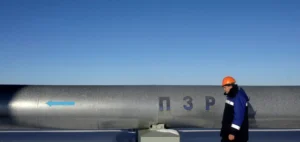The diversification of energy sources in Europe, following Russia’s invasion of Ukraine in 2022, has led to strong interest in liquefied natural gas (LNG). Currently, 42 projects are planned between now and 2025, with 31 proposed and 11 under construction. These projects aim to ensure the region’s energy security, reducing dependence on Russian gas, which has fallen to 30 million m³/day.
Europe has seen a rapid increase in regasification capacity to alleviate LNG supply constraints, but current demand remains weak. According to data from S&P Global Commodity Insights, regasification facilities are operating at an average utilization rate of 46% in 2024, and have not exceeded 70% since April 2023.
Gas storage in Europe
Maximum gas storage capacity in Europe could lead to lower natural gas prices in the third quarter, despite a tight LNG market. Natural gas and LNG prices are expected to trend downwards as European Union (EU) gas storage capacities reach their maximum. However, this decline will be limited by the need to attract a sustainable volume of imports in a tight LNG market.
Since the beginning of 2023, Dutch TTF futures, the main reference for gas prices in Europe, have fluctuated significantly. After peaking in January, prices rose slightly in June before peaking on October 13, when European storage sites were 97.69% full, according to data from Gas Infrastructure Europe (GIE).
In 2024, prices continued to fluctuate between €22.9/MWh and €36/MWh. At the start of the second quarter, storage sites were 59.36% full. TTF futures prices then climbed 20.7% to €31.83/MWh on July 12, with sites 80.52% full.
Outlook for the Third Quarter
Analysts expect TTF prices to fall as storage capacity peaks before the end of October. However, this decline will be moderated by a tight LNG market, making the European gas system vulnerable to supply interruptions from Norway or the USA.
As of July 15, LNG imports into Europe stood at 79.66 billion cubic meters (Bcm), compared with 99.98 Bcm and 94.13 Bcm over the same periods in 2023 and 2022 respectively. This decline comes at a time when pipeline volumes have remained relatively cheap compared with LNG cargoes.
Impact of LNG imports and prices
Platts valued the DES North-West European marker price for August at $10.090/MMBtu as at July 12, a discount of 8.5 cents/MMBtu on the Dutch TTF gas hub price. LNG-TTF rebates in Europe averaged 32.5 cents/MMBtu this year, compared with $1.385/MMBtu and $3.849/MMBtu in 2023 and 2022 respectively.
These tighter discounts made pipeline supply more economical than LNG cargoes for the summer restocking season. However, with arbitrage conditions favoring Europe over Asia, US LNG volumes should increase in August and September.
Year-end outlook
With increased volumes of US LNG, stable pipeline flows and robust imports from Algeria, the European market should reach its maximum storage capacity earlier than last year. Despite this increased capacity, supply shocks could still affect the market.
Last year, LNG prices in North-West Europe fell from a winter peak of $16.877/MMBtu on October 23, 2023 to a low of $9.377/MMBtu on December 31. Prices continued to fall, reaching $8.251/MMBtu on March 31, before entering the European injection season.
The rapid development of regasification infrastructures in Europe could thus represent an insurance policy against future peaks in demand. However, current utilization rates, combined with a still timid demand, raise questions about the long-term profitability and efficiency of these massive investments.






















